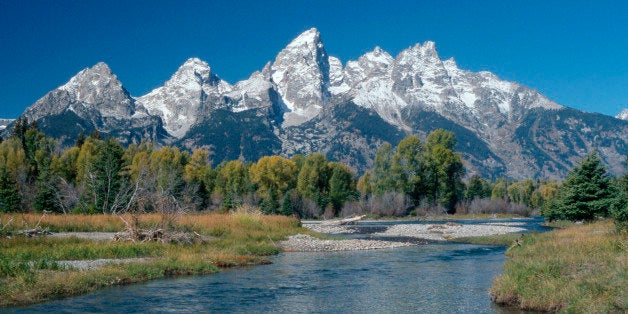
Last week President Obama ordered five federal agencies to ensure that development on national public lands results in a net benefit, or at a minimum no net loss, of land, water, wildlife and other ecological resources. The Presidential Memorandum was sent to the secretaries of Defense, Interior and Agriculture and the administrators of the Environmental Protection Agency and the National Oceanic and Atmospheric Administration. The policy directive incorporates lessons learned from decades of natural resource management and mitigation, a growing scientific understanding of how to address the impacts of development, and the importance of avoiding impacts to ecologically sensitive lands and resources. A key feature is the focus on compensatory mitigation, which is the restoration, establishment, or preservation of natural resources undertaken specifically to offset agency authorized impacts to these resources.
In addition, the new policy directive calls for planning at a landscape or watershed-scale, recognizing that some resources are "of such irreplaceable character" that development should avoid any harm to them, ensuring that mitigation is long-term and durable, encouraging mitigation in advance of development, setting measurable performance standards, and promoting investment by private companies and non-governmental organizations.
In short, it extends the "no-net-loss" standard for wetlands established under President H.W. Bush 26 years ago to all public natural resources and modernizes the nearly 50-year-old concepts of mitigation first laid out under President Richard Nixon through the National Environmental Policy Act. The directives affirm that compensatory mitigation is now national policy and, as natural resource lawyers at the law firm of Holland & Hart have written, "... the agencies are being told to bargain harder, demand greater assurances, and accept little or no risk of adverse impacts when rendering decisions potentially affecting natural resources."
While it is far too early to understand the full impact of this new administrative policy, predictions of economic doom, as well as boom, were quick to materialize. Western Energy Alliance's Kathleen Sgamma was quoted in USA Today as saying "Setting in stone a no net loss ideal essentially puts wildlife and other natural resource values above human needs." House Committee on Natural Resources Chairman Rob Bishop (R-UT) said the policy "... will drive economic investment from our nation's federal land and hurt people that depend upon that land." And Rep. Chris Stewart (R-Utah) said "If this is carried out, it would be devastating for economic activity in the western United States."
Others saw economic opportunity predicting that private landowners will convert lands into mitigation banks creating new environmental markets. Environmental Defense Fund President Fred Krupp said, "The president is creating a path for economic and environmental prosperity." National Mitigation Banking Association President Wayne White predicted, "Full implementation will cut permitting times for development projects, reduce government cost, and increase predictability in the building and replacement of critical infrastructure."
In reality, there are many outstanding ambiguities about what the new policy will actually accomplish in the future but it is an important step forward to incorporate the lessons we have learned from trying to mitigate the impacts of development. It builds on the growing body of scientific understanding of complex ecological systems and institutionalizes the growing agency expertise around mitigation. It accepts the reality that development will continue to impact national public lands and waters but also publicly recognizes there are some natural resources that deserve to be protected entirely from development. It may be confusing, but it is an important step forward.